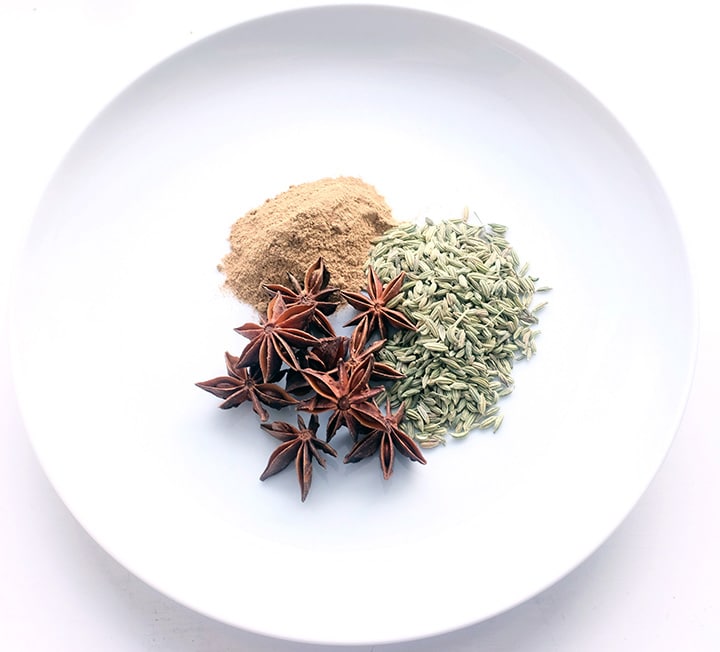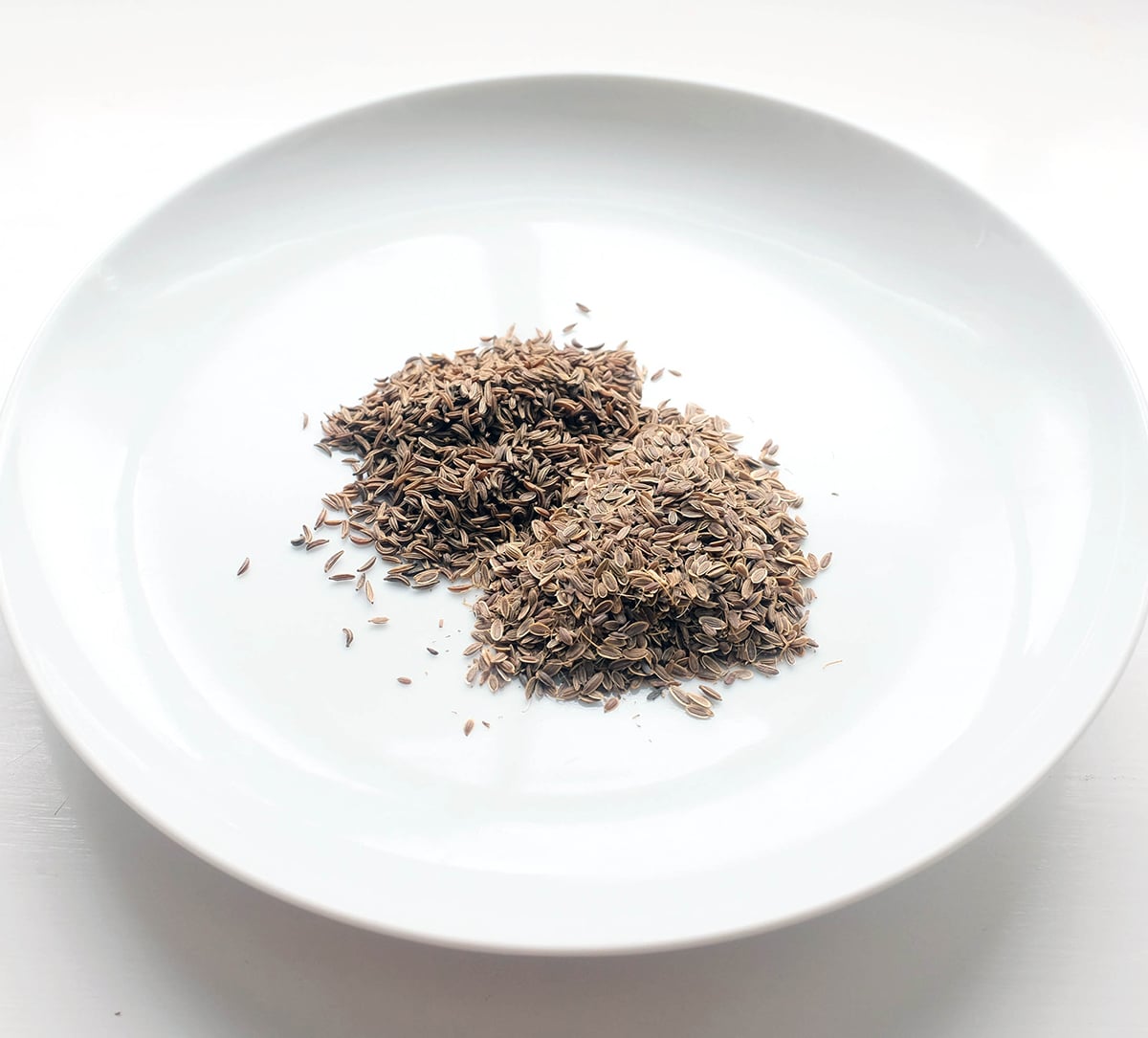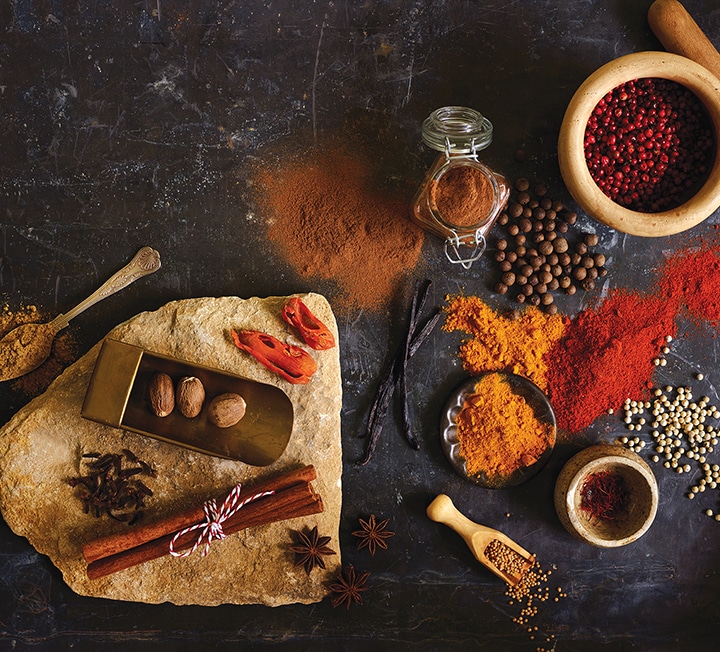The spice series: anise, star anise, liquorice & fennel seed
Ed Smith takes an in-depth look at the many spices available at the Market. This time: anise, star anise, liquorice and fennel seed


“THE QUALITIES OF THESE POTENT SPICES ARE INTERCHANGEABLE, YET THE FLAVOURS ARE NUANCED”
Image: Ed Smith
Either anise is the Marmite of the spice flavours, or Marmite is the anise of the yeast extract spreads.
By anise, strictly speaking I mean the compound anethole, which is the sweet, herbal, warm-yet-cooling flavour compound present in anise seed, star anise, liquorice and fennel.
Though divisive, these potent spices play a significant role in global cuisine. To an extent their qualities are interchangeable. Yet the flavours are nuanced, and so they’re all worth looking into in more detail.
Anise seed
Also known as aniseed, the seeds of the dill-like plant pimpinella animus are light green, near grey in colour and fairly flat; perhaps a cross between caraway and fennel seed in shape and size. It is the anethole compound in this spice that (traditionally) provides the flavour in so many digestifs (pastis, ouzo, arak, sambuca).
Indeed, the spice has been employed as a digestive throughout history and across continents: aniseed-flavoured cakes called mustaceoe were served by the Romans at the end of gluttonous feasts; and the seeds on their own are used in India for the same purpose.
Anise is aromatic and sweet, and though we can note things like menthol, the flavour is distinctly and characteristically, well, that of anise.
The seeds can be left whole for use in teas and infusions, but if adding to food, you’re more likely to toast the seeds to encourage a release of oils, and then grind into a powder – as you would with fennel seeds.
Spice Mountain sells both whole and ground anise seeds. As ever, the whole seeds will be good for around a year if kept in an air tight container. The powder is best used within a few months.
Star anise
Star anise is unrelated to anise so if you require anise seed in a recipe, it’s not a case of picking out all the little round balls in those woody stars and grinding them down.
That said, you wouldn’t be too far away in terms of flavour (because it is cheaper, star anise is often used as a substitute for anise in both baking and alcoholic drinks), it’s just you might find your dish evokes the Orient rather than the Mediterranean.
This seed pod is indigenous to China and is widely used across Asia – through Sichuan, Malay, Indian, and Vietnamese cuisine. It’s the dominant ingredient in Chinese five-spice powder, though it’s becoming more frequently used in the west, too – in part because of our increasingly global approach to cooking, but also in recognition of star anise’s ability to enhance the flavour of meat. Just a petal or two added to a braising stock adds a richness and fullness to red meats like beef, lamb and venison.
The woody stars are distinctive in both shape and smell. For the most part, they’re left whole and infused into braising and poaching liquor. It is a formidable tool; the longer the spice is left to do its work and the hotter the temperature, the more flavour is imparted. If the cooking process is slow, beware the recipes that demand more than two or three stars. However, star anise can also be ground to a powder and indeed is for many Indian masalas and for Chinese five spice.
Again, there’ll be plenty of flavour in whole star anise for around a year. It’s best to use ground star anise within a few months.
Liquorice
Liquorice is the sweet root of a small perennial legume that grows wild across Europe and the Middle East. Of all these anise-like spices, it could be argued that liquorice is currently the least utilised. Yet it has a strong culinary history, having been cultivated by the ancient Egyptians through to Dominican monks based in Pontefract, Yorkshire. Nordic countries and the Netherlands continue to enjoy both sweet and salted liquorice candies. Even so, the majority of liquorice is actually now used as a flavouring for tobacco products.
The root can be boiled and left to impart flavour into stocks and cream based foods, roast and ground to a powder and used directly as a flavouring (I suggest buying it in this form rather than break your grinder trying to create your own). or even chewed whole if you’re in need of a natural breath freshener.
Liquorice roots hold their flavour for a long time. The ground powder, however, drops in potency after just a month or two. Like star anise, the effect of liquorice root when infused depends on the length of time and temperature of the liquid. Note also that many sweet recipes requiring liquorice in fact demand the candy sweet, which will melt down, as opposed to the proper spice.
Fennel seed
Fennel seeds are the fruit of fennel bulbs where the herby fronds of those bulbs are left to shoot upwards and flower, and then those flowers left to drop. If you come across wild fennel towards the end of summertime, see if you can shake out some seeds to take home; the taste and aroma is far more pronounced than in cultivated seeds.
Traditionally fennel seed is seen as a Mediterranean spice, used widely, for example, in Italian cooking. Nevertheless, it has spread through the world and is common in the cuisines of Asia and the Indian sub-continent. Many Indian and Pakistani masalas rely on the addition of fennel seeds, and the seeds are often roasted and eaten at the end of a meal as a breath freshener and digestive.
The flat, oval, light green fennel seeds are often left whole as they seem less obtrusive or likely to sit in your teeth than seeds like caraway, cumin or coriander. That said, recipes will often instruct a cook to bash the seeds a little, or to fully grind them to a powder. Per usual, if you toast fennel seeds, their oils will be released and the flavour more pronounced in your food as a result.
As ever, the whole seeds will be good for around a year if kept in an air-tight container. The powder is best used within a few months.
Culinary uses
All these spices work particularly well with pork, lamb, beef and venison. Notably so when those meats have been braised or poached together with the spice.
Though some have particularly strong associations (pork and fennel seed; liquorice and pigeon; star anise and duck), because the anethole compound is common to them all, it follows that wherever one of these anethole spices pairs well with an ingredient, the others would most likely work well in its place.
It’s worth mentioning, though, that the notes of star anise are particularly vital in Chinese cooking (on its own and within Chinese five spice), and is often used with pork or beef. Dishes like red braised pork and beef tendon soup stand out. Also in Malay, rendang and Vietnamese, pho.
Fennel seed has forever been associated with Italian cooking, not least as a sweet spice to rub over pork loin and belly (including when making porchetta), within fresh sausages and cured and air dried finocchiona salami. Apparently, it may have been the case that the spice was originally used to disguise the flavour of rancid meat and the less noble cuts. One heck of a match, though.
These four spices are considered sweet spices too, so naturally sit in cakes and cream-based puds as proudly as cinnamon, cloves, nutmeg and allspice.
The flavour of anise adds elegance to French vin chaud, intrigue to coffee and coffee-flavoured desserts, warms an apple pie or pastry, and is a particularly strong match with citrus. A petal or two where you might otherwise have used candied ginger root works a treat as well (when poaching or roasting rhubarb or pears, for example).
Liquorice’s traditional culinary use is as a flavouring for sweet candy, with those Dominican friars making use of it in a biscuit.
Anise seed is generally sweet, rather than savoury, too. Spiced cakes and other baked goods, and sugar alcoholic drinks are the traditional uses of this spice.
Market spice heroes
It’s hard to look past the fennel seed loaf by Bread Ahead. It’s a true celebration of fennel seed, which sings out in every bite. Excellent with cheeses and cold meats, particularly if just toasted to release the aromas of the seeds.
See Ed’s recipe for lemon & star anise posset with liquorice & fennel seed biscotti.


